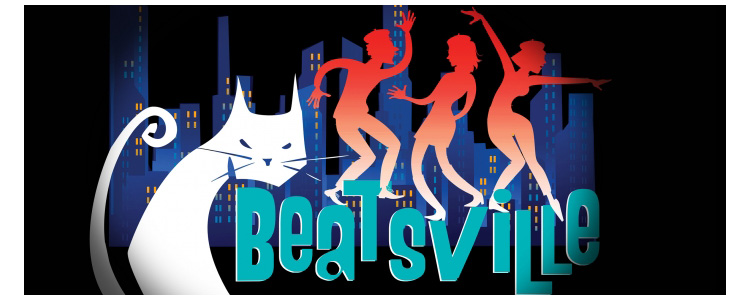We had a great Festival—our cast was spectacular, and made the show look fantastic—and we received a hugely gratifying outpouring of interest from various theatres and organizations who wanted to help us take the next step forward. We sort of fumbled the ball a little—we felt that we still had some writing to do, and weren’t sure what that next step should be, and then we got swept up in other projects. Luckily for us, when we were finally ready to move forward, there was still a lot of goodwill in the community from people who remembered it from the Festival, and they proved instrumental in helping us get the show back on track.
What work have you all been doing on the show since presenting it to the industry? Did the presentation at the Festival inform any of that work?
The version of the show we presented at the Festival stuck very close to our source material, and what we discovered there was that although that source was definitely a strong basis for a stylish musical, there wasn’t enough story to make it a satisfying evening. Through the Festival, we were invited to see a student production of the show at the Musical Akademie in Denmark—translated into Danish! We didn’t understand a word of it, but that actually helped us focus strictly on the architecture of the piece, and we realized that we needed to drastically re-think how the last two-thirds of it were structured. We next spent some time at the Rhinebeck Writer’s Retreat and a retreat at the Weston Playhouse in Vermont (again, both opportunities that stemmed from the Festival), where we broke the show into pieces and tried to figure out how to put it back together. It was in Weston that we had our big “aha!” moment, and we tested the result in another student production, this time at NYU Steinhardt (yet another Festival connection!). There, director John Simpkins was monumentally patient as we overhauled huge chunks of the show in rehearsal (we completely rewrote the last twenty minutes just two days before our first performance). We brought the resulting version to the 2014 NextFest at the 5th Avenue for a 29-hour reading, and while working there with director Bill Berry realized that together, we had finally found both the right shape for our show, and the right home for it.
You’re preparing for Beatsville’s world premiere in a co-production with Asolo Rep and the 5th Avenue. What has that process been like, and what does your partnership with those two theatres look like?
We feel incredibly lucky to have two theatres standing with us on this. It means that we get to take advantage of the wisdom and experience of two fantastic creative staffs, each of which have unique viewpoints to share—Michael Edwards, at the Asolo Rep, has been the “big picture” thinker, challenging us to take bold strokes in re-thinking who our characters are, while David Armstrong and Bill Berry at the 5th have been instrumental in helping us tighten, streamline and polish each moment. It also takes some of the pressure off of us; knowing that we will definitely have two productions within a short time span means that we can afford to take some risks and do sweeping rewrites at the Asolo, since we’ll have a chance to consolidate what we learn at the 5th. Finally, having the resources of two theatres has been a godsend – we’ve been able to conduct not only 29-hour readings, but numerous table readings and a three-week lab as well, all of which have gotten us closer and closer to where we need to be.
What have been some of the joys and challenges for you as a writing team as you’ve continued to develop the piece?
We’re not just a writing team—we’re also married, with two school-age kids, and by far the biggest challenge for us has been counterpoising our artistic partnership with our home life; separating writing time from family time is always a delicate balancing act, as is maintaining our very different individual voices while also speaking for each other in both the rehearsal room and civilian life. Any good writing team gets at least some of its spark from arguing and clashing; we have to be especially careful not to let that kind of adversarial energy leak into our “real life.” But that’s also part of the joy for us—the alive-ness that we feel when we work on this piece also infuses our marriage, and having a shared dream makes every step forward extra sweet. In some ways, the show is like our third child. (Shh, don’t let our boys hear that.)
Why should people get excited about the upcoming chances they’ll have to see Beatsville?
Beatsville drops you into the bohemian world of Greenwich Village’s beatnik scene, sets your neurons vibrating to a fresh, frantic be-bop score, and does it with a wickedly dark satirical edge that literally draws blood. It’s a gas, it’s the most, it’s right-on…and even after all the time we’ve spent working on it, there still isn’t any other show that sounds or feels quite like it.


